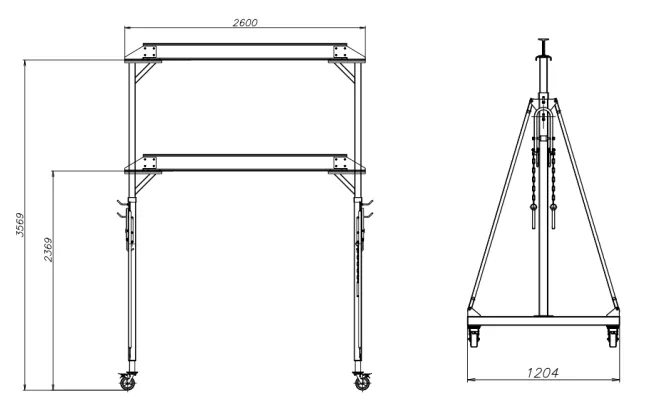Moving Equipment for Vending Machine Installation and Relocation Solutions
Moving Vending Machines A Comprehensive Guide to Equipment and Considerations
Vending machines have long served as convenient providers of snacks, beverages, and various products in public places, from schools and offices to hospitals and shopping malls. Their mobility adds a layer of flexibility that is often overlooked. Moving a vending machine, whether for refurbishing, reprogramming, or relocating to a new site, requires careful planning and consideration of equipment. This article delves into the essential aspects of moving vending machines effectively and safely.
Understanding the Equipment
Firstly, it is vital to understand the structure of a vending machine. Most machines can weigh anywhere from 300 to 800 pounds, making them substantial undertakings when it comes to movement. The equipment needed for moving these machines typically includes hand trucks, dollies, straps, and sometimes a small team of helpers.
1. Hand Trucks and Dollies A heavy-duty hand truck or dolly is indispensable when moving vending machines. These tools are designed to bear substantial weight and can help to tilt the vending machine back, allowing it to be rolled smoothly to its new location. Make sure the dolly is rated for at least the weight of the vending machine you are moving.
2. Straps Using straps to secure the vending machine during the transport process is crucial to prevent any accidents or damage. Heavy-duty ratchet straps or moving straps can provide the necessary stability while the machine is in transit.
3. Protective Padding Depending on the distance of the move, it may be worthwhile to invest in some protective padding. This can prevent scratches and scrapes that could occur while moving the machine through narrow hallways, doorways, or staircases.
Preparation Before Moving
Before physically moving the vending machine, several preparatory steps should be undertaken
1. Empty the Machine Ensure that the vending machine is completely emptied of products. This step reduces weight and prevents items from shifting during the move, which could lead to breakage.
2. Unplug the Machine It is important to switch off and unplug the vending machine before attempting to move it. This precaution helps to prevent any electrical hazards during the relocation process.
3. Assess the Pathway Before beginning the move, examine the path you will take. Check for potential obstacles, such as stairs or narrow doorways, and consider how you will manage these challenges. This pre-move assessment can save time and reduce the risk of accidents.
The Moving Process
vending machine moving equipment

Once everything is prepared, it’s time to move
. Here are the steps to follow1. Position the Hand Truck Place the hand truck or dolly beneath the vending machine. Tilt the machine back carefully to not strain your back or cause undue stress on the machine.
2. Secure with Straps Once the machine is on the dolly, use the straps to secure it in place. Ensure that it is tightly secured to prevent any movement during the transport.
3. Use Teamwork If possible, have at least one other person assist with the move. One person can guide and steer while the other pushes the dolly, making it easier to navigate corners and uneven surfaces.
4. Navigate Carefully Move slowly and carefully, especially when navigating steps or uneven surfaces. Communication is key—ensure everyone involved is aware of each other's actions to avoid any accidents.
After the Move Setting Up
Once the vending machine is at its new location, careful reinstallation is vital
1. Level the Machine Ensure the vending machine is level, as an unlevel machine can lead to malfunctions.
2. Reconnect Power Plug the machine back in and check any settings that may have been altered during the move.
3. Restock and Test Finally, restock the machine and perform a test run to ensure it is functioning correctly before opening it to the public.
Conclusion
Relocating a vending machine is not merely a logistical challenge; it involves strategic planning and the right equipment. By understanding the necessary tools and preparation steps, you can ensure a smooth transition for your vending machine, ultimately enhancing its functionality and accessibility. Whether you’re a vending machine operator managing multiple units or a business owner seeking to optimize product placement, mastering the art of moving vending machines will significantly benefit your operations.
-
Unlock Seamless Relocation with Our Heavy Equipment Moving ExpertiseNewsJun.06,2025
-
Unleash Unrivaled Flexibility with Our Adjustable Gantry CraneNewsJun.06,2025
-
Unleash Heavy-Duty Efficiency with Our Industrial Gantry Crane SolutionsNewsJun.06,2025
-
Revolutionize Steel Handling with Our Magnetic Lifter RangeNewsJun.06,2025
-
Master Equipment Mobility with Premium Machinery Mover SolutionsNewsJun.06,2025
-
Elevate Your Material Handling with Magnetic Lifter TechnologyNewsJun.06,2025
-
YS Permanent Lifting Magnets: The Smarter Way to Handle SteelNewsMay.22,2025
